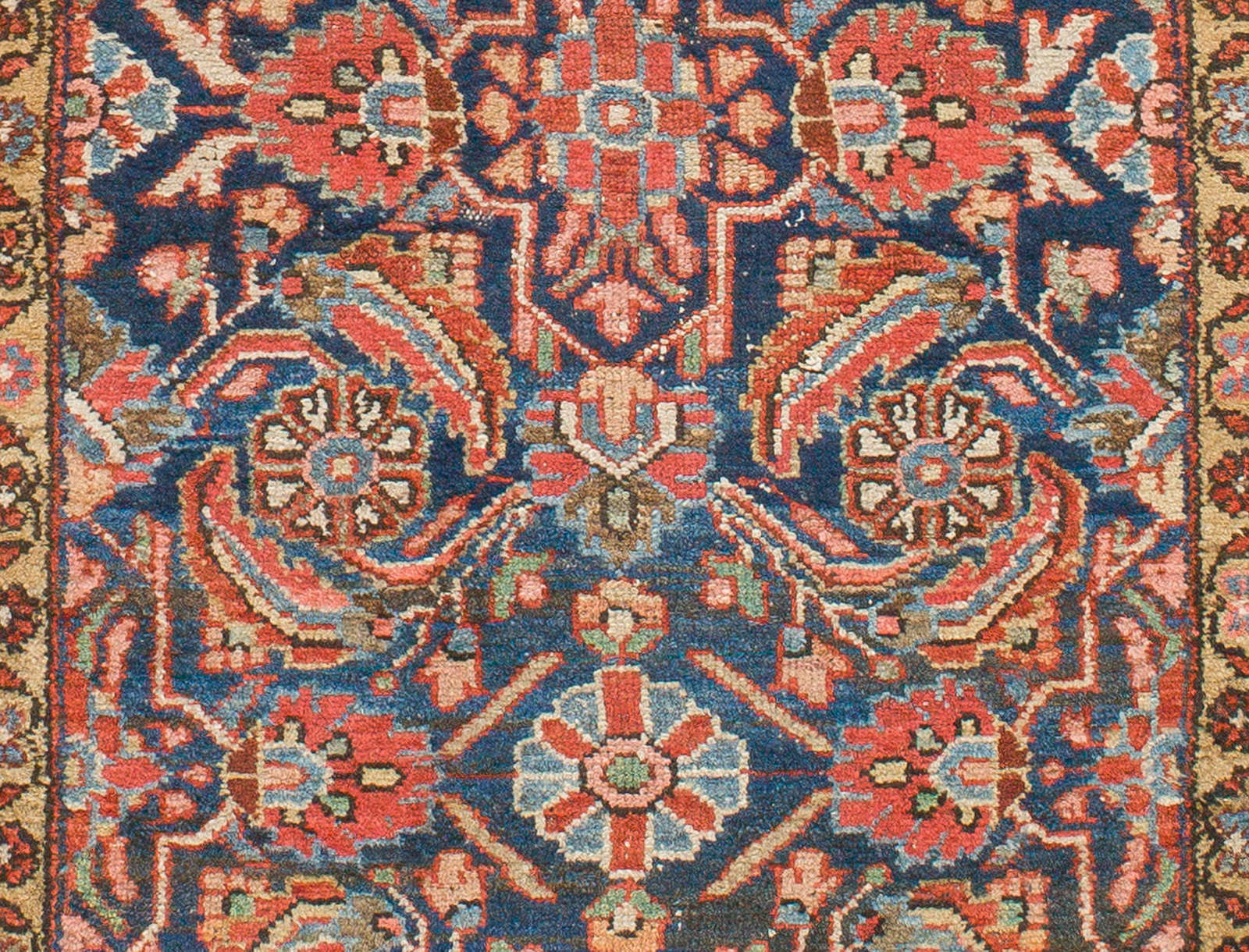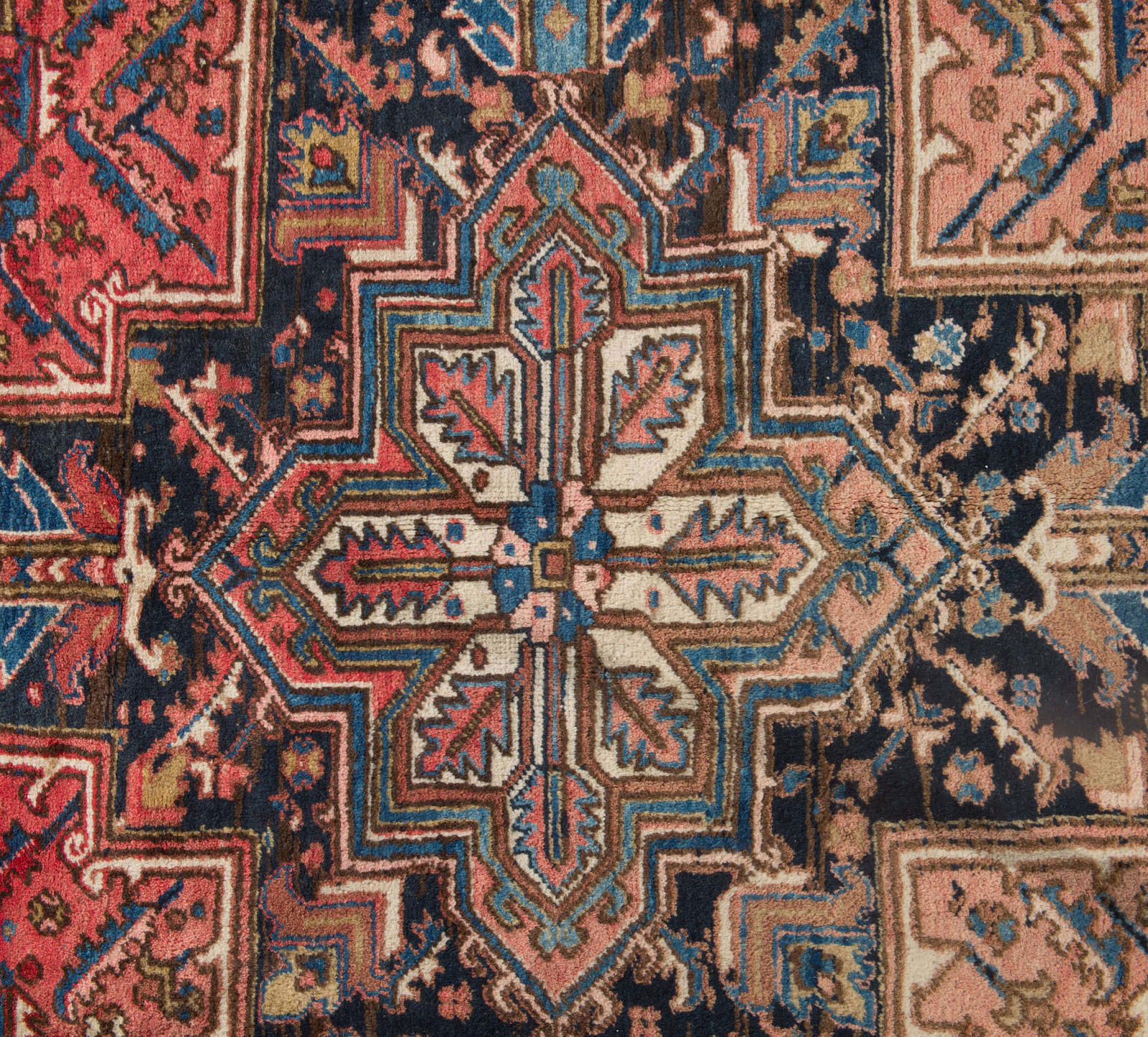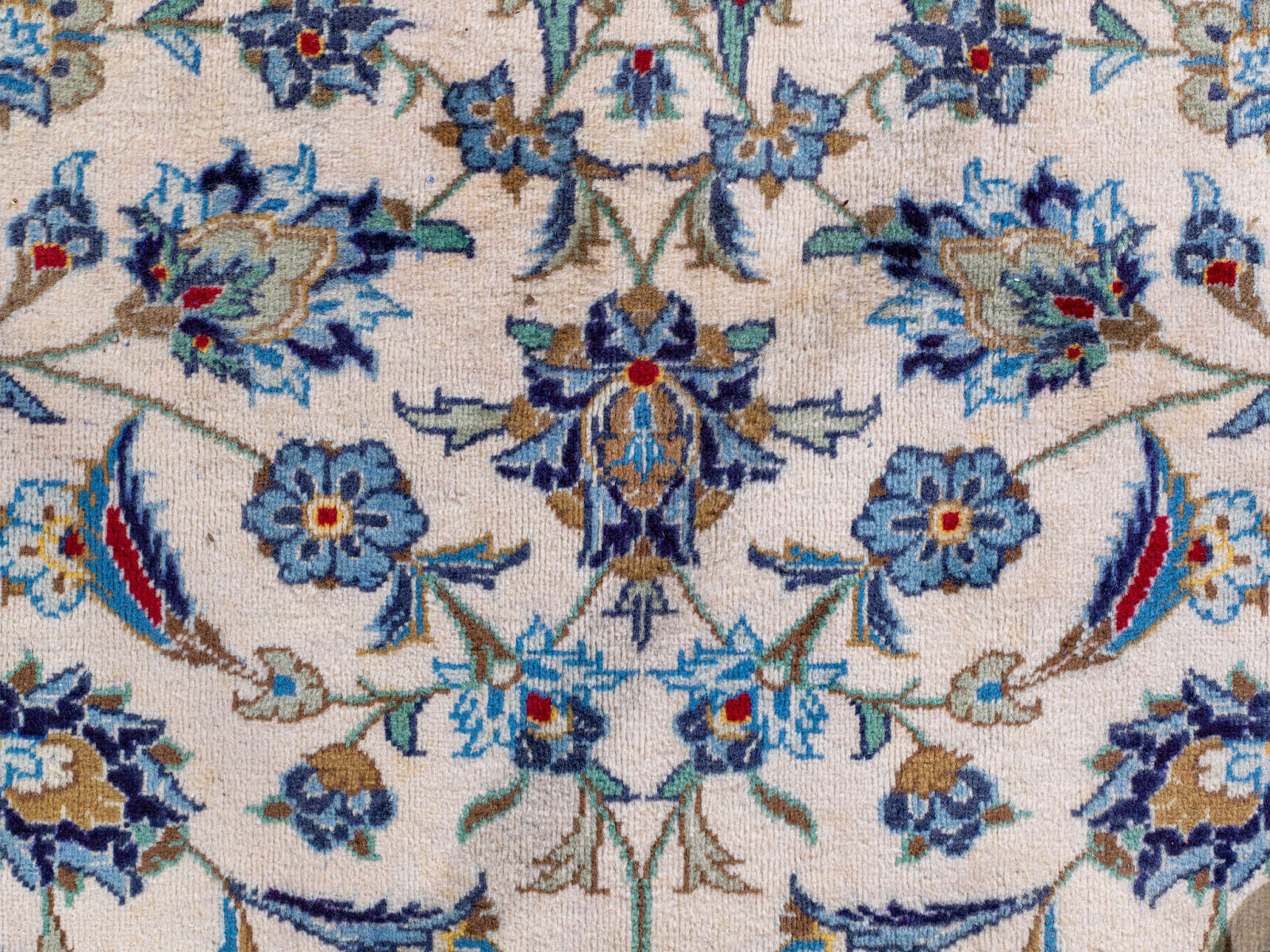Antique carpets tend not to have a synthetic underside
Genuine antique carpets are an impressive sight with their expert craftsmanship, intricate designs and natural materials… So if you’re interested in one for yourself, it’s important to know how to identify Persian and other different antique carpet types.
Just as an antique fireplace catches the eye against a wall, then a beautifully patterned and carefully handmade antique carpet will grab your attention on the floor. However, there are lots of modern imitations out there.
In this guide, we will share some tips to tell apart antique carpets from the more recently manufactured ones.
The fabric should be made of sheep’s wool, camel hair, silk or cotton
For example, antique carpets tend not to have a synthetic underside. In contrast, the more modern and mass-produced ones often use a cheaper material on the back – older ones are more likely to feel soft.
The fabric should be made of sheep’s wool, camel hair, silk or cotton – with no sign of any synthetic materials.
These different types of carpet are one of a kind - here are several ways to identify them.

× 
How to identify antique carpets by region
The fringe should not look sewn-on
Some of the most coveted antique carpets came from Persia, modern Iran, where many skilled weavers painstakingly produced the highest quality pieces.
Persian and other antique carpets from Asia tend to feature very decorative motifs – including rosettes, medallions or paisley patterns.
In an authentic antique carpet from Persia, the fringe should not look sewn-on. It should look like it was woven at the same time as the rest of the carpet, as a natural extension of the piece.
Usually with symmetrical designs and often coloured red, blue or black, this is how to identify Persian rugs by their different styles:
- Abadeh: Abadeh carpets are often identified by their hexagonal central decoration
- Ashfar: Ashfar carpets are typified by red or blue colour tones and geometrical patterns, often with a large central square medallion
- Bidjar: Bidjar carpets are distinguished by their heavy wool or cotton foundation and known as the ‘iron rugs’ of Persia for their durability
- Kashan: Kashan carpets were hand-knotted, large and often made from the very finest silks – this one in our collection is woven in softly hued blues, magenta and ochre on an ivory ground
- Nain: The warp and weft are made of cotton, while the pile is made of wool and silk to make the motifs stand out
- Isfahan: Isfahan carpets have soft wool and silk woven in a very tight pile using a red, magenta, blue or indigo colour palette
- Bakshaish: Bakshaish carpets featured geometric designs, a popular style during the 19th century
- Heriz: Heriz carpets were often made by 3-4 people, tending to have geometric motifs and often incorporating woven images relating to old folk tales
Outside of Asia, there are also some beautiful antique carpets to find. These are some of the characteristics to look for in antique or vintage non-Asian ones:
- Continental Europe: Flower and garland motifs were popular, with muted colours and asymmetrical designs
- Indigenous America: Geometric designs and tribe-specific colours were frequent, sometimes braided i.e. woven together in a spiral shape
- Scandinavia: Abstract motifs, varied colours, geometric patterns and asymmetrical designs were common

× 
Antique carpets’ weaving style
Antique carpets are always handmade
In antique carpets, the weaving style you’re looking for is usually:
- Flat-woven: These carpets show no pile or fabric ends – more common for simple designs, these were made by stretching fibres on a loom
- Hand-knotted: Pile is usually visible – the skilled weavers tied fibre pieces together on a loom by using one of several knotting styles
Antique carpets are always handmade. Taking weeks or months to craft, there may be signs of minor irregularities and inconsistencies in the design on the carpet’s upper or underside.
Clues to finding the age of antique carpets
Makers of antique carpets tended to use natural vegetable dyes
Signs of wear and tear are usually a good sign of an antique carpet that’s never been repaired. Careful examination may help you to narrow down its age – for example, by looking for:
- Wovendates: Sometimes you can see a date included as woven fibre, perhaps around the carpet’s border – often, antique Persian rugs have dates written in Arabic
- Hooked carpets: Popular from the 1840s onwards, these were made by hooking fibres through a backing
- Unique dimensions: Carpets were more likely to have templated or stencilled designs from 1868 onwards, so those of an unusual size may well precede this date
- Unusual colours: Similarly, carpets that stand out due to a surprising choice of colour could also be pre-1868 ones
- Faded colours: Since bright dyes only came in during the 1920s, carpets with faded colours are more likely to be from earlier in time
Also, makers of antique carpets tended to use natural vegetable dyes – these fade naturally with age. Some modern carpets are bleached to artificially create this aged look.
If a magnifying glass reveals a sharp band of colour in the middle of the fibres in a pile, rather than a gentle change in hue, that’s often a telltale sign of a bleaching treatment.

× 
Final thoughts: how to identify antique rugs
Leave it on the corner of the carpet for a few hours, then see if the cloth shows any signs of colouring.
If yes, that suggests the carpet has synthetic dyes which show up when coming into contact with water. In contrast, the vegetable dyes found in antique carpets will hold.
Now you know what to look for when identifying antique rugs in terms of their materials, colours, patterns and weaving styles!
Antique and vintage rugs reveals the rich cultural heritage of Central Asia and surrounding regions, where artisans have practised rug-making for centuries. For example, antique Heriz carpets attract collectors with their bold medallions, vibrant colours and remarkable durability.
Intricate patterns distinguish Persian carpets which hold worldwide renown for their stunning designs and exquisite craftsmanship, reflecting the artistic traditions of Iran and neighbouring areas.
The finest examples from Persia and other Central Asian sources often appear as hand knotted rugs, a meticulous technique that yields highly durable and visually striking carpets. Each rug within this world of antique and vintage textiles connects generations through the skilled hands that create them.
Elsewhere in our how-to series, we have written these guides – and more
To find the perfect antique to decorate your home – whether it’s an antique carpet, a fireplace or anything else – we have something to suit all tastes. Please don’t hesitate to contact us.